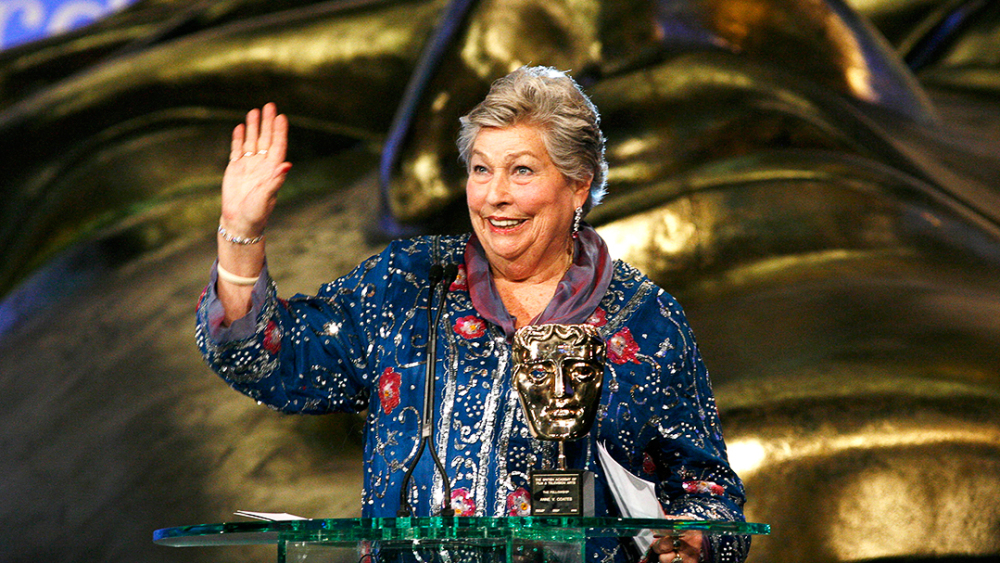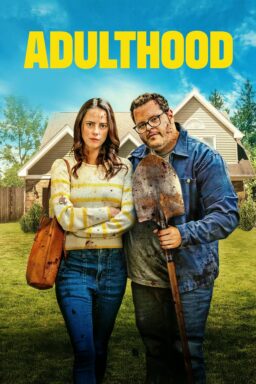Back in the early days of cinema, editing was considered little more than a technical job. The artistic types were the ones one who wrote, produced, directed and acted in the films while all the editor did was look at the footage and simply snip out the bad stuff. When the Motion Pictures Editors Guild formed in 1937, they chose to be considered a technical guild instead of a creative one. Today, we all realize that editing is one of the key artistic components shaping a film. The one good thing that came out of editing being considered strictly a technical endeavor was that women, who were generally shut out of most of the “creative” aspects, were allowed to do the job. As a result, there have been any number of great female editors over the decades who have made invaluable and oftentimes groundbreaking contributions to some of the greatest movies ever made. Just a partial list would include Verna Fields (“Jaws”), Dede Allen (“Bonnie and Clyde”), Adrienne Fazan (“An American in Paris”) and Thelma Schoonmaker (too many Martin Scorsese films to list here).
Arguably the greatest, however, was Anne V. Coates, who passed away on May 8, 2018, at the age of 92. Throughout a career spanning over 60 years, she worked on over 60 films, receiving numerous accolades that included two Oscars and four additional nominations, and is credited with creating perhaps the most famous single cut in movie history.
Coates was born on December 12, 1925 in Surrey, England and after graduating from Bartrum Gables College, she went to work as a nurse at the innovative plastic surgery hospital established by Sir Archibald McIndoe in East Grinstead. Already part of a film industry family—she was the niece of J. Arthur Rank—she decided to try to pursue a career as a filmmaker. Her first film job was with a production company that specialized in making religious-themed film shorts that found her repairing damaged prints so that they could be sent out again. From there, she was able to get a coveted assistant editor job at Pinewood Studios that saw her working with editor Reginald Mills on a number of movies, including the classic “The Red Shoes” (1948). She received her first solo editing credit on the 1952 film version of “The Pickwick Papers” and over the next 10 years worked on a number of films ranging from potboilers like “Forbidden Cargo” (1948) to such acclaimed efforts as the comedy classic “The Horse’s Mouth” (1958) and the acclaimed drama “Tunes of Glory” (1960).
It was at this point that she signed on for the movie that she is most associated with, David Lean’s “Lawrence of Arabia” (1962). It had a legendarily long production, with Lean shooting tons of footage that Coates needed to comb through and put together into something interesting and entertaining. As anyone who has sat through a misfired epic can attest, this is not the easiest thing to pull off, but “Lawrence of Arabia” has been put together with such style and grace that even though it clocks in at more than 3 1/2 hours, you barely notice the time passing. More striking are Coates’ editing room experiments, which wouldn’t normally be seen in a movie of this type. A fan of the French New Wave films that were all the rage in the early ’60s, Coates invoked some of the then-radical approaches to editing that they employed to striking effect. In what is perhaps the most famous cut of all time (with the possible exception of the bone/spaceship bit in “2001: A Space Odyssey”), the moment where a shot of Lawrence blowing out a match jump cuts to the vast expanse of the desert under the blazing sun, was originally meant to be a more standard dissolve until she proposed doing it as a hard cut while she and Lean were watching an assemblage that didn’t have the dissolve effect yet. Coates won her first editing Oscar for “Lawrence of Arabia.” (The film would fall into neglect over the years as it was cut down in order to squeeze in more showings per day, a major restoration in the 1980s that Coates helped supervise brought it back to its full glory.)
One of the keys to Coates’ brilliance as an editor was her versatility. Coates cut epics (“Those Magnificent Men in their Flying Machines,” “The Adventurers”), serious dramas (“Becket,” which earned her a second Oscar nomination); comedies (“I Love You To Death” “What About Bob?”, “Striptease”), action spectacles (including “The Eagle has Landed,” “Raw Deal” and “In the Line of Fire,” for which she earned her fourth Oscar nomination); erotic dramas (“Unfaithful,” “Fifty Shades of Grey”); horror (“The Legacy”), and yes, even some outright junk (“Masters of the Universe,” “Congo“). Though not all of the movies that she worked on were masterpieces, her contributions were almost always solid, and one shudders to think how some of them might have fared without her deft touch.
Coates was also willing to experiment by working with newer directors and embracing new technologies that radically changed editing. She signed on to work with David Lynch, who at that point had only done the midnight movie freakout “Eraserhead,” on his first mainstream film, “The Elephant Man.” This is a project that could have gone sideways, but she and Lynch proved to be in perfect sync, especially in how they handled the eventual unveiling of the deformed John Merrick (John Hurt). Instead of the grotesque melodrama that some may have expected, they came up with a film that balanced the bizarre and the mainstream in ways that were embraced by critics and audiences alike. Years later, Coates initially turned down Steven Soderbergh’s offer for her to edit “Out of Sight” because it would have required her to utilize the computer-based Avid editing system for the first time. She was finally persuaded to give it a try and took to it with astonishing ease, perfectly mirroring Soderbergh’s offbeat approach to the material and giving us one scene—George Clooney and Jennifer Lopez reuniting for the first time since their bizarre meet-cute in a car trunk—in which the inspired use of overlapping dialogue and imagery creates one of the all-time great romantic moments.
That Coates’ last credit was “Fifty Shades of Grey” might strike some as a depressing capper to a career that featured so many genuine classics. Then again, that film does serve as a tribute to her skills, both in the fact that she was still working as she was entering her nineties and how her efforts were arguably the only aspect of the project that wasn’t embarrassing. She received a number of far more fitting tributes in her later years. In 2003, she was named an Officer of the British Empire by the Queen in celebration of her career. In 2007, the British Academy of Film and Television Arts, who had in the past nominated her work on “Murder on the Orient Express,” “The Elephant Man,” “In the Line of Fire” and “Erin Brockovich,” presented her with a Lifetime Achievement Award. She received her second Oscar, a Lifetime Achievement Award, in 2017.
In 2015, the Motion Picture Editing Guild put out a list of the best-edited films of all time, and two of Coates’ were on it: “Lawrence of Arabia” (#7) and “Out of Sight” (#52).












